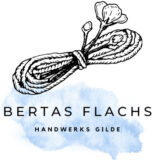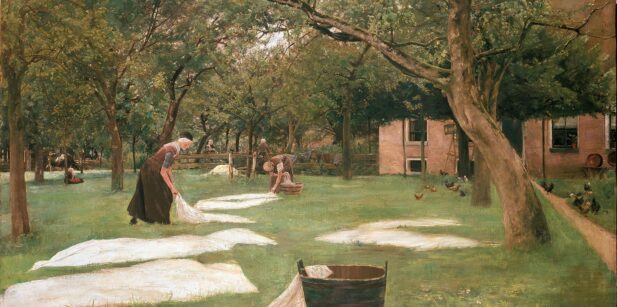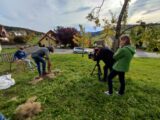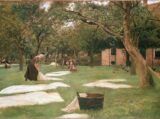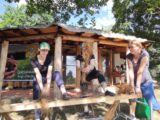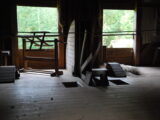All bast fibres, but also some types of cotton, have a grey, brownish or beige colour. Home textiles in particular should be pure white in colour as a sign of cleanliness and good housekeeping.
Freshly woven textiles, but also textiles that had become dirty through use, were therefore subjected to so-called lawn bleaching. The wet fabrics and yarns were laid out flat or stretched out on a meadow near a river, the bleaching ground, and kept continuously damp. In order to remove greasy components, but also resins and waxes that were embedded in the fibres, the pieces of linen were soaked in potash liquor before bleaching or the fabrics were moistened with ash liquor in between. The effect was also enhanced by treatment with sour milk - so-called acidification.
Chemically speaking, lawn bleaching utilises a natural phenomenon. When atomic oxygen acts on water, hydrogen peroxide (H2O2) is produced - a powerful bleaching agent. It is contained in rain, especially after thunderstorms. In addition, the photosynthesis of the lawn on which the textiles lie forms so-called oxygen radicals, which also have a bleaching effect.
It took up to six months until a linen fabric was almost completely white and it had to be turned at least once.
This was followed by a second thorough wash with ash suds to remove any stains that may have formed during the long bleaching time.
This video shows how a washing day and bleaching were organised in Germany and Austria up until the 1960s:
https://www.youtube.com/watch?v=9WqBDqSvjb4
